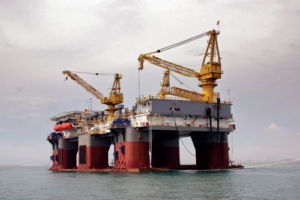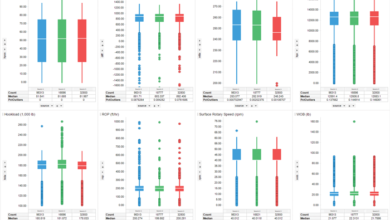Earlier contractor involvement in projects, simplified procurement process can help to improve integration, technology adoption
Complexity of operator organizations poses significant challenges, but contractors seeking earlier engagement must be eager to facilitate communication
By Linda Hsieh, Managing Editor

Raphael Siri is CEO of SapuraKencana Drilling and Senior VP of Group Transformation, Strategy & Supply Chain at SapuraKencana Petroleum.
How has the difficult state of the industry affected its approach to safety? Is it harder for companies to prioritize safety when the economics are so bad?
Actually, in my view, safety should not be a priority. Safety is a value, and it’s something you do all the time. That does not change regardless of the market.
However, I understand that a downturn like this will challenge the morale and focus of our workforce. They’re worried about their jobs, and that puts their minds elsewhere. That’s where I think safety is being challenged, not necessarily companies taking shortcuts.
What can industry leaders do to keep their employees focused on safety?
The same things we’ve been doing over the past decade – preach it, lead by example and regularly put it on the table. Leaders have to talk about safety and make it visible.
In our company, we’ve also made it clear that we’re not making a single cut to our training budget. Nobody is touching it. We are training our people to be better at what they do. To me, better means safer and more efficient.
There is quite a surplus of drilling rigs on the market. Why haven’t we seen even more rig retirements than we have so far?
Rig retirements are still ongoing. Quite a few companies have done their parts, and we’ve done our part, as well. But each company has different types of assets. If a company only has older assets, they can’t retire their older rigs because they would have no more assets. There are also companies that have only new assets. Of course they’re not going to drop a new asset. There is no one-size-fits-all plan for rig retirements.
If the older assets don’t get retired, will there still be a place for them within the next five years in the offshore market?
Yes, but it depends on operators. They used to go for the bigger and newer rigs just because they could, but were they using a Ferrari to go to the office when a Toyota would’ve been good enough? I think operators are taking very close looks at their business plans, and they’re now looking for the best fit-for-purpose rig. Why take a rig with a 2 million-lb derrick if the most you will see is 1.5 million lb? There are still projects where the drilling is simple and in benign environments. They really don’t require premium assets.

What’s your view on the types of cost reductions that the industry has made? Are they sustainable?
Some cost reductions are non-sustainable, like operators delaying the development of a field to save drilling CAPEX. Eventually they will have to replenish their reserves. But there have also been many initiatives that are sustainable – for example, where operators have consolidated their infrastructure.
On the contractors’ side, there’s been a lot of effort to remove things from their systems that are not adding value, not just to the P&L but to operations. Over the past decade, contractors have created systems that are very complex for what we do. At SapuraKencana, we believe in “Simplify to Comply.” It came about because we realized that you can’t have systems or processes that only a PhD graduate can understand.
I think we’ve also seen a lot of work done to reduce the number of interfaces on the rig, where contractors are taking on more tasks for the operator. Every interface is a risk, and a safety factor is built into every interface. That increases cost, so reducing interfaces is reducing cost and reducing risk.
That type of effort probably takes a lot of conversation and collaboration between the companies.
Yes, it takes a lot of discussion. We have to really know what the client’s pain points are. What’s different this time is that we’re seeing more clients looking at what contractor’s pain points are, as well. The downturn has really pushed us to work together to find a middle ground that helps both of us.
Some companies are still not so open to discussions like these, but I think the successful companies are the ones that are trying to understand the other side of the fence.

What value do you see in having contracts that are based on performance?
We’ve seen those types of contracts for some time, where there is a bonus if you achieve performance targets and a balance if you don’t. It’s a good way for contractors to have more skin in the game, and I believe it will help to drive sustainable reductions to our cost structure.
In one project we worked on, for example, we were penalized a certain amount for having an incident. It would then take us at least three months to catch up from that incident, so we really drove a focus internally to not have any incidents. After that, the number of incidents reduced drastically.
So, the model does work. It just has to be set up properly, and both sides have to share in both the pain and the gain.
It also works better if you have a long-term relationship. Today’s contracts are no longer three, four or five years. They’re for three or six months, which makes it hard to really rate performance. We can still do it, but the system has to be simple. If it’s so complex that it takes six months to put in place, there’s no point.
In August 2016 at the IADC/SPE Asia Pacific Drilling Technology Conference, you spoke in favor of operators bringing contractors into a project earlier for more integration and synergy, but you also said it does not happen very often. What are the barriers for contractors getting involved earlier?
There are two. First, many contractors don’t necessarily have the knowledge to participate in a FEED study. You need to have enough in-house engineering knowledge to get more involved.
The second and more important hurdle is the complexity of the structures within the operator’s organization. Often you will find that the people who are designing a field do not speak very efficiently to the people who will procure for the field, to the people who will develop the field, or to the people who will drill the field. They have many departments, and they are not necessarily communicating effectively.
This is a complexity that we’ve imposed on ourselves for good reason, like compliance. But it also comes with a risk that you’ll lose a lot of efficiency. For contractors who want to get involved at an earlier stage of a project, it can be daunting to even identify the right person within the operator’s organization that you need to talk to.
I think there is a growing recognition that this is an issue, but it is really up to the operators to resolve. As contractors, I think we just have to be eager to facilitate communication. I do firmly believe that early involvement will bring significant solutions to the challenges they face.
Would you like to see changes to operators’ procurement process so that it supports more technology adoption?
I don’t think there’s one model that works perfectly. I’m very much in favor of segregating the responsibilities simply because, if you don’t go through a proper procurement process, you can find yourself going to the quick solution where you won’t get the quality and the reliability. You will increase your risks.
What we have to do, though, is to simplify the procurement process. Additionally, the person in charge of the procurement process must have more skin in the game. They have to share the accountability for the core of their organization’s business and whether it’s successful or not.
Over the next couple of years, what kinds of innovations would you like to see?
For sure, it’s around data. Our industry is one of the last ones that still changes equipment because of its age as opposed to its condition. To do condition monitoring will require more data and knowledge, but it’s about time we went in that direction. We should be changing out parts when we know it’s really needed, not because it feels right.
Beyond that, we are also looking at what is the next directional drilling? What is the next managed pressure drilling? What is the next technique that will allow us to drill in a safer and better way and to reach areas we couldn’t reach before? I’m hoping that we can do more extended drilling without so much pressure on our topsides, for example. I’m also interested in how we can develop subsea fields in a more efficient way. I’m not talking about efficiency for any single operation but for the life of the asset. That includes how we pipe, how we build, how we install, how we maintain.
I’m sure other innovations will come up, but I just don’t have my sight on it yet. That’s what downturns are meant for. They push people to think outside the box. It’s not that we want to change everything. Some stuff we’re doing are very good, so let’s keep doing it. Some stuff we have to look at differently. We just have to be on the lookout and participate.
In what ways will the industry be different when we come out of this downturn? Do you think there will be significantly fewer drilling and oilfield service companies?
There will be fewer but not significantly. To some extent, the banks are giving lifelines to companies that have no reason to stay in business. These are companies that are not adding value to the industry, and they’re pulling down the rest with them.
The financing world is trying to keep afloat investments they made in the past. They’re giving some companies holidays on payments or restructuring their debts, but these companies are in the ICU already. You give them two years in the ICU and they will still die. The financing world should be looking at those companies’ real value to the industry and make the tough call. Otherwise they’re just going to lose more value two years down the road and continue to drag down the rest of the industry with them. DC




